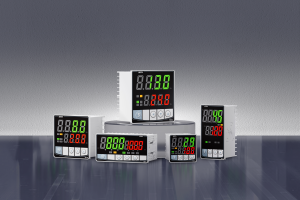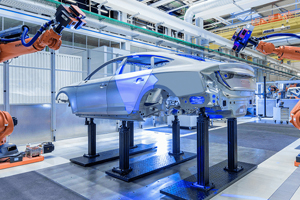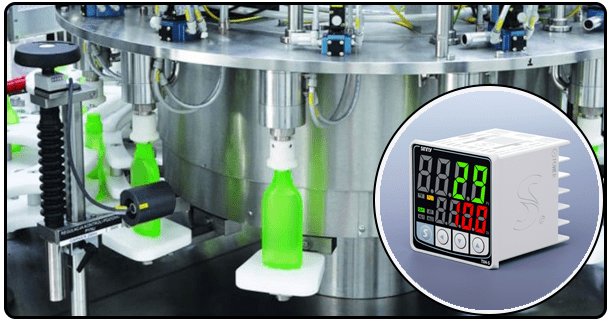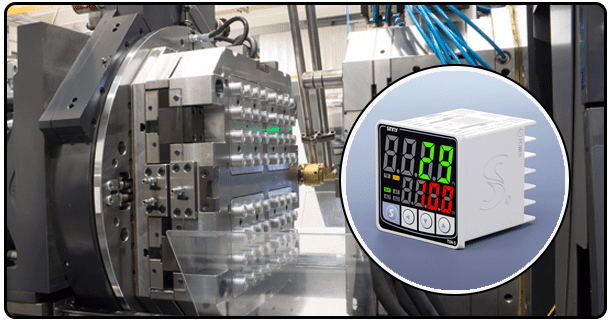Step-by-Step Guide, PID Tuning, Applications
Master setting up and tuning your PID temperature controller with our comprehensive guide. Learn step-by-step procedures for installation, configuration, PID tuning methods, and troubleshooting common issues for precise temperature control in industrial, lab, or hobbyist applications.
1. Introduction: Temperature control is important
Precision temperature regulation is essential for a wide range of industries, including manufacturing, chemical processing and food science. It's also important in fundamental scientific research. It is important to maintain specific temperatures within parameters in order to ensure product quality, efficiency of processes, safety and achieve desired chemical or physical results. It is often insufficient to try and maintain constant temperatures through basic control systems or manual adjustments. Manual methods are often inefficient, inconsistent, and require constant, unwavering operator attention. Automated control systems have significantly improved upon these limitations by offering a reliable and efficient method. Among the most sophisticated and widely effective automated control strategies is the use of a Proportional-Integral-Derivative (PID) controller. The purpose of this guide is to explain in detail how PID Controllers integrate into temperature control systems and work. It is important to understand the fundamental principles that underlie their operation, and how they are used in automated temperature control. Anyone involved with the design, implementation, or use of such systems must understand both their theoretical foundation and the practical application.
2. Understand PID controllers: the core concept
A PID controller, at its core, is a feedback control mechanism which calculates the error as the difference between an desired setpoint temperature (target temperature) and measured process variables (actual temperature). The PID controller then takes corrective actions based on the error using three different control terms, Proportional Integral and Derivative. It operates in a continuous feedback loop that constantly measures, compares, calculates, and adjusts. The proportional (P), term produces an output signal directly proportional the magnitude of error. A larger error will result in stronger corrective actions. Integral (I), on the other hand, is a term that accumulates errors over time, and gives an output proportional to their sum. The steady-state problem is eliminated by this component. The derivative (D) predicts errors in the future by analyzing the change rate of the error. The controller calculates the velocity of the error and produces an output which acts as a damping factor, preventing overshooting and decreasing the time required for the system's stabilization after disturbances. PID's elegance lies in the ability of this controller to combine all three of these actions into a responsive and adaptive system. This makes it ideal for controlling temperature processes that are dynamic. The PID controller's ability to maintain high-accuracy setpoints and handle fluctuation has made it a popular choice for temperature control in applications that require complex control.
3.Components in a PID temperature control system
Each component plays a crucial role in the process. It is important to understand the functions and interactions of each component for installation as well as tuning. Of course, this is the PID unit. The 'brain of the system' is usually a microprocessor or microcontroller, housed in this device. The device receives signals from the sensor and performs PID calculations. It then generates output signals for the actuator. Hardware components include inputs for sensors, drivers that can handle the current required by the actuator, displays for monitoring and configuration, buttons, touchscreens, or other user interface elements. The primary purpose of the hardware is to handle the feedback loop, and then command the actuator. Temperature sensors are another important component that is responsible for measuring actual temperatures within a process or system. The thermocouples are commonly used as temperature sensors in PIDs. They produce a voltage that is proportional to the temperature. Resistance Temperature Detectors, such as Pt100 and Pt1000 RTDs, also exhibit a change in resistance in response to temperature. The sensor to use depends on factors such as the temperature range required, its accuracy and any environmental conditions. The sensors are connected via signal conditioning to the input terminals of the PID controller. Actuator is the part that actually changes the temperature according to the PID controller. The actuator's main function is to transmit the signal. In heating applications, actuators include mechanical or electrical relays, SSRs that provide smooth control over heating elements and solid-state relays. For cooling, actuators can be pumps, fans or solid state chillers. Actuator receives control signals from PID controller outputs and changes its operation. For example, it can increase or decrease power for a heater or turn a fan off or on. The actuator must be matched with the needs of the system. This includes the amount of power required and desired response characteristics. The heated load or process refers to the system or substance whose temperature needs to be regulated. While not strictly part of the main loop, auxiliary components are sometimes necessary. They can be a power supply capable of handling both the controller as well as the actuator. Safety devices like fuses and circuit breakers can protect the circuitry.
4. The Operation Cycle of the System
Understanding the operation of a PID system for temperature control is easier when you examine its continuous feedback loop. The cycle is a set of repeated steps to keep the temperature in the process at the target. This cycle starts with the deployment of the temperature sensor within the system or process to measure accurately the current temperature. The sensor then converts this physical temperature to an electrical signal, such as voltage or resistance changes. This electrical signal is transmitted to the PID control unit. The controller then performs an important calculation after receiving the input: It compares the temperature measured with the setpoint temperature that the operator previously specified. This difference is called the error. The PID algorithm in the microprocessor of the controller calculates corrective actions based on the error rate and its change. The PID algorithm sums up the Proportional Integral and Derivative contributions to produce a total signal. The output signal is typically voltage or current. It's sent to the actuator from the output port of the controller. This control signal is received by the actuator, which responds appropriately. If the temperature measured is lower than the setpoint, the PID controller calculates an output to instruct the actuator to enhance its effect. For instance, the PID will increase the power of a heater or activate a fan if it detects a negative error. In the opposite case, the PID controller will instruct the actuator to decrease its effects if it is found that the temperature measured exceeds the presetpoint. Actuator action has a direct impact on the temperature of the process. Temperature is altered by increased or decreased heating. The temperature sensor will measure the updated temperature after a few seconds. The PID controller receives this updated value, which replaces the old one. This controller will then compare the updated measurement to the setpoint again, calculate the error and decide the next signal for the actuator. The feedback loop is formed by the continuous cycle of measuring, comparing, calculating, acting, and then re-measuring. This allows the system dynamically to adjust its response, maintaining the temperature close to desired setpoint regardless of variations in load or external disturbances. Closed-loop operations are essential to the stability and efficiency of the system.
5. Design considerations for effective PID temperature control
It is important that the actuator interfaces with controller output capabilities such as voltage, current and PWM. Understanding the dynamic of the actual process load is also crucial. Understanding its thermal mass and heat transfer characteristics will help you to anticipate how it will react and select the right PID tuning parameters. Another factor to consider is noise. Electrical noise can affect sensors, particularly thermocouples. Filtering, shielded cable use, and software filters within controllers can all help to ensure that sensor signals are clean. Safety must be the primary concern in any design. To protect both equipment and personnel, it is essential to ensure adequate safety margins and implement fail-safe mechanisms.
6. PID Tuning: A Critical Step
The hardware is the basis, but the PID system's performance depends on how well it can be tuned. The controller's response to an error is determined by these parameters: Proportional(P), Integral(I) and Derivative(D). PID parameters that are not properly tuned can cause a number of issues, such as excessive oscillations around the setpoint, slow response times and significant steady state error. For effective temperature control, it is important to achieve well-tuned PID parameters. It is the primary objective of PID to set up the gains P, I and D so that the system operates with minimal overshoot, a quick stabilization time and a stable steady state. Tuning a PID control can be done in a number of ways. Manual or iterative tuning is a common method, especially for beginners. The manual or iterative method involves changing parameters incrementally, while observing how the system responds. Ziegler-Nichols is another technique that's widely used. It uses empirical rules, which are based off the ultimate gain of a system and its ultimate cycle time. This method is complex and can be difficult to correctly apply. Manual/iterative approaches are more user-friendly for many, particularly in simpler applications. Tuning usually begins by focusing on Proportional. As the P value increases, the oscillation of the system is increased. This is known as ultimate gain. It is common to set the recommended tuning value slightly below the point of oscillation (e.g. using the 0.5 Rule). After a P value has been determined, an Integral term can be introduced. After a long period of operation, the I term will be slowly increased to eliminate any steady-state errors (small temperature differences between setpoint temperature and actual temperature). Integral Winding-up is a condition whereby the total error becomes so large that the controller cannot handle it, leading to instability. The derivative term is then added in, typically, small increments. This D value helps dampen remaining oscillations. It smooths the temperature response, reduces overshoot and improves the overall system performance without causing significant slowdown. Modern PID controllers have auto-tuning functions that can determine the parameters automatically. These features are convenient but should not be relied upon blindly. They may not provide optimal settings and they can be difficult to use. It is common for the tuning process to be iterative, requiring multiple adjustments and observations in order to reach the balance between stability and responsiveness. Resources specific to the make and model of the PID controller are always invaluable, as they often provide manufacturer-recommended tuning procedures and insights.
7. Use of PID controllers to control temperature
PID controllers are widely used in the temperature control system because of their many advantages. PID controllers are able to achieve high precision levels. PID controllers can keep the temperature of the process very close to the setpoint. They often achieve a tighter stability in temperature than simple proportional or on/off controls. In applications, where even small changes in temperature can affect the outcome of a process, this precision is essential. PID controllers are also very stable. PID algorithms are designed to compensate and anticipate disturbances, and to maintain system stability without oscillations. Stability is essential for achieving consistent results, and ensuring safe operation. PID controllers also automate temperature control, eliminating the need for human intervention. This allows for an unattended, continuous operation. Automation increases efficiency, and it frees up resources. The PID controllers can also be highly adaptable. Tuning parameters are adjustable to fit a variety of processes from simple heating, to cooling, to heating, to complex heating, to recalibration if process needs change. PID controllers are versatile because of their flexibility. The use of PID controls also leads to improved consistency. It ensures consistency in the operation of the process by maintaining stable temperatures.This ensures optimal product quality and reaction rates. PID controllers are used to regulate boiling points in distillation columns and for drying processes, where temperature is an important parameter. PID controllers are widely used in the food industry for a variety of applications. This could include controlling temperature to maintain consistency during cooking to guarantee safety, maintaining stable temperature in incubators for hatching or managing refrigeration units in order to avoid spoilage. PID controllers play a crucial role in laboratory research. PID controllers are essential in laboratory research settings. PID controllers are used in the electronics industry for a variety of applications. This could be temperature control during soldering (e.g. reflow ovens), controlling the temperature to avoid damage of electronic components, or controlling temperature in test chambers. In the HVAC sector, especially in thermostat control systems to maintain precise indoor temperature, PID controllers find use. Hardware components and tuning parameters are chosen according to the specific requirements of an application.
8. Conclusion
The installation and implementation of a PID system for temperature regulation requires careful planning, exact hardware integration, accurate configuring, and precise tuning. The comprehensive guide of this article has taken you through all the steps necessary to deploy a temperature controller with a PID. The fundamentals of PIDs have been discussed, as well as the components (controllers, sensors, actuators and loads), how the loop works, important design considerations, PID tuning, PID's benefits, diverse industries that use PID. It has been noted that the tuning process is where PID controller capabilities can be realized. This requires patience and care in adjusting the I, P and D parameters.The user can create a PID system that is reliable and efficient by following the steps and understanding how the PID works. This guide is a good starting point, but always consult the documentation of your manufacturer for specific model details. To master PID control, you must constantly learn and experiment. Understanding the system, and then applying it thoughtfully to the tuning process will yield excellent results. You can harness the PID technology's power for accurate and stable temperature control.
- Instantaneous precision control with Plug-and Play PID temperature controllers
- A simple way to improve precision for every application























